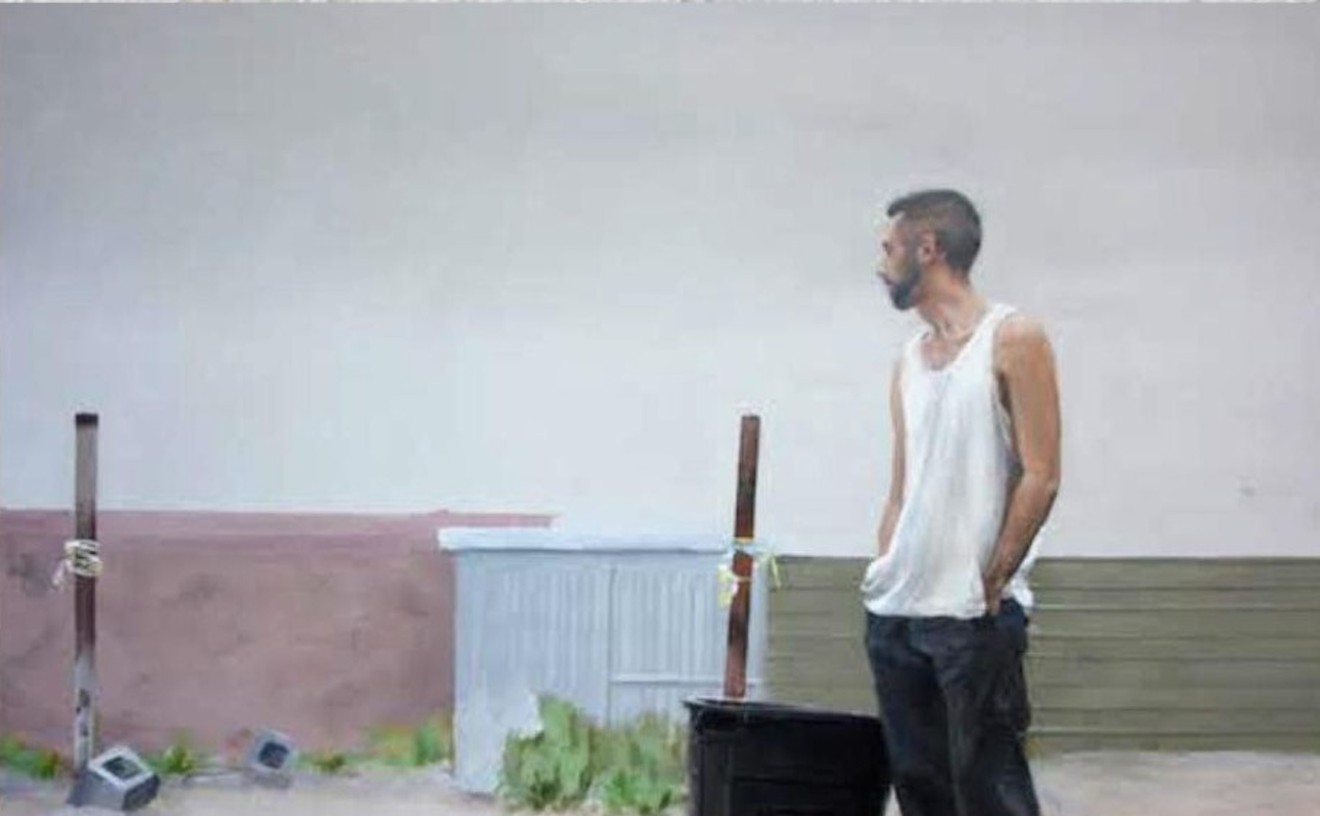In some other setting, the hat would convey simply "gone fishing" or maybe "On Golden Pond." But in this elaborate picture, one of seven works by the renowned German artist on view at ASU's art museum, it seems to symbolize the stealth -- guilt-driven or not -- of people cruising for sweets. The furtive face of the man -- barely a pie slice of flesh with slits for eyes beneath the brim -- is a mask of pure espionage. Distanced, disembodied and small, it reduces the man behind it to a type rather than an individual: the kind of shopper shaped by the forces of overabundance. His appearance is as much a product of the store as the shelves of candy. This leap from miniscule effects to larger causes is the compelling dynamic of Gursky's large works. Small as this show is, there's enough of that at play here to suggest why the German artist is considered a contemporary master of the big picture.
Drawn from the more-than-45-work exhibition that appeared recently at New York's Museum of Modern Art, the ASU version includes five of Gursky's murals, which can come as large as 7 feet high and 11 feet wide. In addition to the store, their subjects include the Hong Kong stock exchange, a soccer match, a rock concert and a sunset. This sampling typifies Gursky's preferences. He has spent the past decade portraying the staging areas -- factories, government and corporate offices, hotels, seaports, stores, cultural and sports venues, and industrial sites -- of modern civilization.
As 99 Cent suggests, Gursky's pictures are deceptively undramatic and simple. He builds their panoramic effects and meanings one layer of minutiae at a time. The meticulous details and nuances of his scenes reflect the kind that photography has always conveyed better than any other media. Yet Gursky's digitally altered images say more about new photographic truths than they do about old ones.
He relies heavily on computers to retouch and reshape his pictures, weeding and adding details to suit his sense of how the world should appear. This approach, long a staple of commercial photography, turns the traditional concept of objective documentation and photographic truth on its ear.
That's probably just as well. Photographers have always cropped, retouched and otherwise tampered with the purity of their negatives. Yet powerful new computers and software have given artists the capacity to create the kinds of large, ambitious photographic realities that Gursky produces. These manipulated realities lie closer in feeling and impact to painting than photography ever has.
What sets Gursky apart is that he hasn't followed the platoons of techies who've turned photography into a game of visual tricks. He uses the technology to advance his own subtle game and cause of seeing.
There seems to be nothing haphazard or serendipitous about the details of his scenes. Everything in the picture appears exactly the way Gursky wants it. Part of the power of his images comes from their vantage points. Many of his larger works place you omnisciently above the scene and crowd, providing the all-knowing and controlling view that a child has over an unsuspecting colony of bugs. His Tote Hosen 2000, looks down on the frenzied crowd at a rock concert. The 'Where's Waldo?' sea of bodies is dominated by the Zeig Heil slant of upraised arms. Yet there is a limit to this sea. Gursky has a sensational eye for defining the limits of his panoramas. In this instance, the borders are the edge of the stage on the left and the railing of the barricade at rear of the hall on the right.
In his soccer picture, you can see practically from goal to goal. In 99 Cent, the scene is framed by the facing and side walls of the store. The same is true of his view of the stock exchange. These boundaries define the known world of the image, as if to say, "This, right here, is everything you need to know and understand about this picture." In Tote Hosen 2000, the contorted frenzy of people in the crowd is countered by the poses and earnest expressions of the security crew and sound men corralled with banks of electronic equipment in the middle of the crowd. Despite the visible antics of the band onstage, these are the real players behind the passion. They control the noise.
In Hong Kong Stock Exchange II, the big board, clicking off stock numbers, is in charge. It occupies the center of the squared, red-carpeted room like the monolith of Arthur Clarke's 2001. The only signs of life outside this grim-looking financial world of drones in sleeveless red jackets with white numbers on their backs are the street clothes that the workers have draped on hangers over the sides of their computerized compartments.
In Gursky's world, these trapped workers are the real products of the global economy. Yet no power controls their circumstance and fate as fully as Gursky does.










